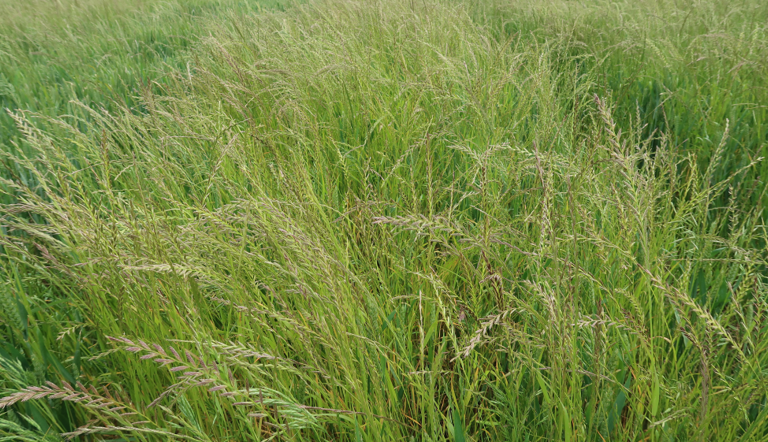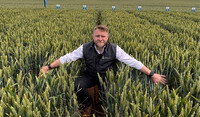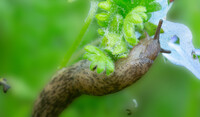
Include CTU to Boost Ryegrass Control

Alongside using cultural control measures and rotational tactics to keep these difficult to control grassweeds in check, growers should also consider the use of additional, target-specific active ingredients such as chlorotoluron (CTU), pendimethalin (PDM), diflufenican (DFF) and flufenacet (FFT) to ensure their crops remain adequately protected.
Ryegrass species
Ryegrass is a common arable weed in many parts of the UK, with Italian ryegrass (Lolium multiflorum) widespread in the Midlands and South and usually more problematic than Perennial ryegrass (Lolium perenne).
One of the key reasons for the prevalence of Italian ryegrass is the simple fact that its seed can survive for more than five years in favourable conditions.
Ryegrass is also exceptionally vigorous and can be more competitive than black-grass: a population of just 5 plants/m2 can reduce cereal yields by 5%, with higher infestation rates known to cause yield losses of up to 89%.
Ryegrass also tillers more liberally than black-grass, with each plant capable of producing more than 20 heads and 5,000 seeds. As a result, populations can build up very rapidly.
Herbicide resistance
Herbicide resistant Italian ryegrass was first detected in the UK in 1990 and is now present in at least 33 counties in England. The first case of ryegrass resistance to ALS inhibitors was confirmed in 2012. In comparison, herbicide resistant black-grass was known to be present in 35 counties in 2017.
The main mechanism conferring resistance is enhanced metabolic non-target site resistance (NTSR) which can reduce the efficacy of most ryegrass herbicides.
ACCase (FOP, DIM and DEN) and ALS (sulfonylurea) target site resistance have also been confirmed in ryegrass species.
Cultural controls
The creation of stale seedbeds, delaying drilling and using spring-sown crops will all help to reduce the ryegrass burden, but these techniques are less effective versus ryegrass than they are against black-grass.
Increasing the seed rate of cereal crops can also be used to increase competition for light and nutrients, thereby enabling the crop to thrive at the expense of the ryegrass population.
And, as with all weed species, machinery hygiene is key to preventing the spread of ryegrass seeds: all cultivation and seeding equipment should be thoroughly cleaned to reduce the movement of seeds between fields.
Boosting control with ADAMA’s herbicides
Ryegrass specific herbicide programmes need to consider the germination profile of the field population in question, and the sensitivity of that population to different herbicide actives.
The power of TOWER®
Recent trials carried out on behalf of ADAMA have shown that our three-way herbicide TOWER®(250 g/l chlorotoluron, 40 g/l diflufenican & 300 g/l pendimethalin) performs well on all strains of Italian ryegrass, giving a 98-100% reduction in fresh weight.
The same trials also indicated that while no populations of ryegrass were completely resistant, straight pendimethalin and straight prosulfocarb showed a reduced efficacy in each population, indicating a degree of herbicide insensitivity. Meanwhile, straight diflufenican showed more effect on insensitive strains of ryegrass, although it was the least effective residual active ingredient when used alone.
In contrast, most of the efficacy exhibited by TOWER® can be apportioned to the inclusion of chlorotoluron: it is reassuring that chlorotoluron is not obviously affected by any of the known resistances in UK species of Italian ryegrass and that TOWER® will therefore be a useful component at the pre- or early post-emergence timings.
The trial work clearly indicated that the following applications gave the best levels of ryegrass control:
- Peri-emergence treatment: TOWER® plus prosulfocarb
- Peri-emergence treatment: TOWER® followed by TOPIK® (240 g/l clodinafop-propargyl & 60 g/l cloquintocet-mexyl)
- Peri-emergence treatment: TOWER® followed by TOPIK plus mesosulfuron and iodosulfuron.
Keep on top with CHROME®
Chlorotoluron is also one of three active ingredients found in CHROME® (280 g/l chlorotoluron, 80 g/l flufenacet & 40 g/l diflufenican).
CHROME® can be used as a standalone pre- or post-emergence product to control Annual Meadow Grass infestations or as a partner product to bring CTU into blackgrass and ryegrass control programmes: CHROME® is best included in treatment stacks at the early post-emergence application timing to improve the control and persistence of programmes targeting black-grass and/or ryegrass. CHROME® also delivers a positive effect against all brome species and is excellent against groundsel.
Key ryegrass control tactics
- Delay drilling to create stale seedbeds
- For heavily infested land, consider a switch to spring cropping
- Ensure all cultivation and seeding machinery is kept clean to reduce weed seed migration
- Increase seeding rates to enable the crop to out-compete weeds
- Select target-specific herbicides – the addition of CTU can help to control populations of weeds which have developed resistance to more frequently used active ingredients
- Ensure herbicides are applied accurately and at the optimum timing
TOWER®: an exclusive three-way co-formulation
TOWER® is an exclusive co-formulation of three active ingredients with complementary modes of action. In addition to providing excellent control of annual meadow grass and broadleaved weeds, TOWER® also provides good activity against grass weeds in winter and spring wheat, winter and spring barley, winter rye and winter triticale. With a flexible product label, TOWER® can be used as a pre- and/or post-emergence treatment in winter cereals and spring wheat and spring barley.
Three active ingredients:
- 250 g/l chlorotoluron
- 40 g/l diflufenican
- 300 g/l pendimethalin

CHROME®… the complete herbicide
CHROME® contains a unique blend of three complementary active ingredients which deliver superior control of weeds even in the most challenging conditions:
- Chlorotoluron (CTU) 280g/l
- Flufenacet (FFT) 80g/l
- Diflufenican (DFF) 40g/l
CHROME® can be used as a pre-emergence or post-emergence treatment.

Latest articles

A look at the next generation of cereal disease control - ADAMA In Action 2025
